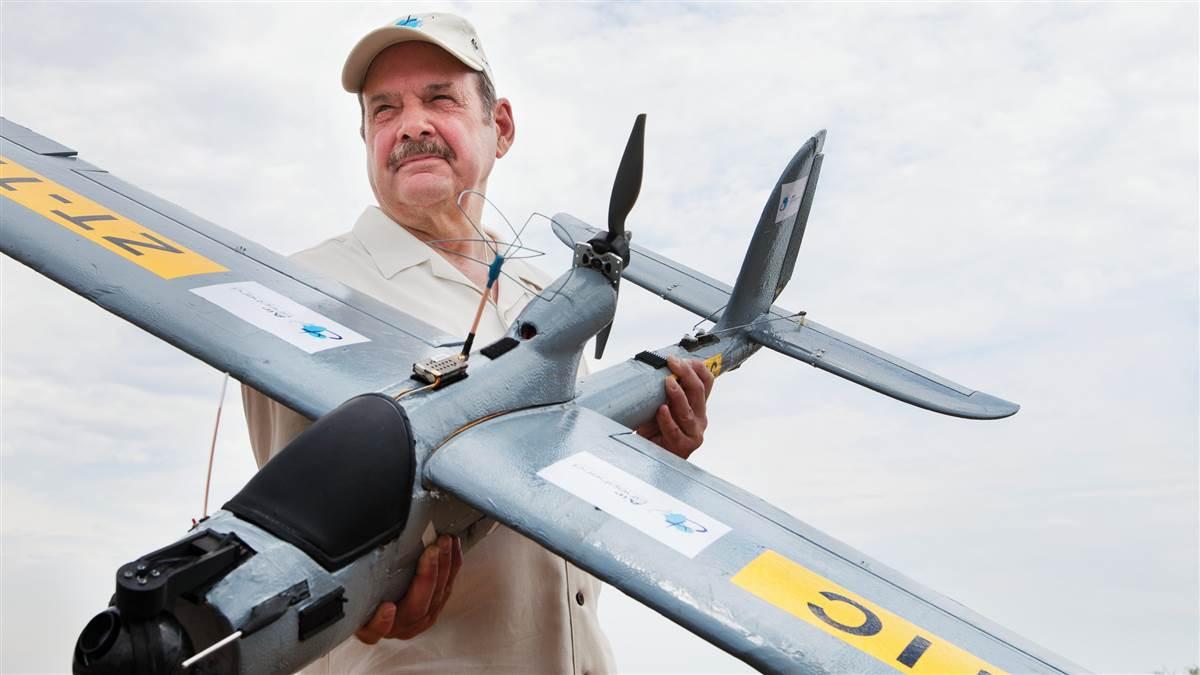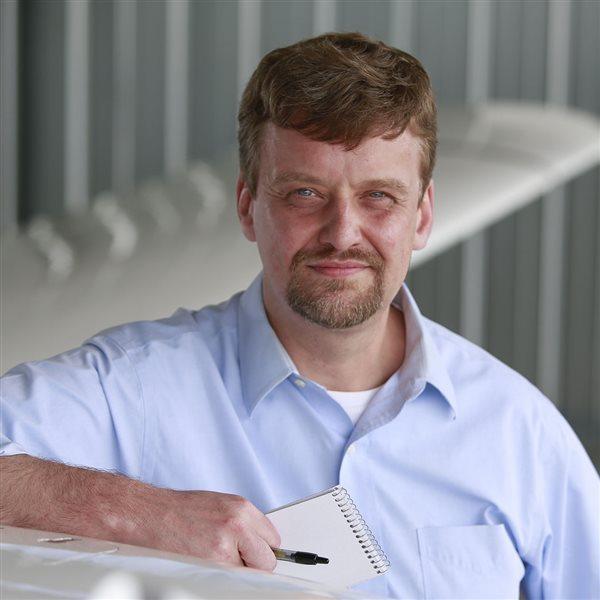
John Petersen is chairman of the Charles A. and Anne Morrow Lindbergh Foundation, which created the program Air Shepherd in response to an emergency threatening the existence of entire species in Africa, particularly rhinoceroses and elephants: a surge in poaching. Working with drone maker UAV & Drone Solutions, Air Shepherd has achieved noteworthy success that encourages expanding the program’s aerial support for animals to more locations.
What do you think Charles Lindbergh would think of Air Shepherd?
Reeve Lindbergh, the youngest daughter of Charles and Anne, often says that her father would be thrilled about this program. The Lindberghs took their family to Africa on safaris in a number of countries and were very concerned about the future of the great animals.
Why are small unmanned aircraft an asset against poachers?
First of all, our electric aircraft are silent and invisible. We fly at night—when the poachers operate—and they don’t know we are there. Second, there are extraordinary new sensor capabilities—infrared optics, to be sure, but now radar. Third, our custom-designed aircraft fly up to four hours on a single battery charge. Fourth, flying drones is far cheaper than full-size aircraft. And fifth, we are working with universities and commercial developers to rapidly expand our capabilities, keeping us significantly in front of the poachers.
Does Air Shepherd fly UAS beyond visual line of sight?
We fly exclusively beyond line of sight [BLOS] and at night. Up until a couple of months ago it was not legal to fly either BLOS or at night in the U.S., so we’re probably the only nonmilitary operators in the world that fly exclusively this way. We have flown over 4,000 missions and almost 7,000 hours in four southern African countries, so we clearly have more experience in this area than anyone else.
Do you think Air Shepherd will help improve the public image of drones?
We believe that in the coming years deployed UAS platforms will be used for many other conservation and ecology-oriented areas, especially as the on-board sensor technology advances rapidly. The image is clearly going to change.
Do you need pilots?
Yes, we need pilots, but our operations are deep in the bush in remote areas of southern Africa and our teams deploy into the field for extended periods of time, often being gone for a month or more. It is relatively easy to train drone pilots but it is harder to find individuals who enjoy being away from civilization for extended periods. We look for folks, often couples, who enjoy living off the beaten path.
Web: www.airshepherd.org



